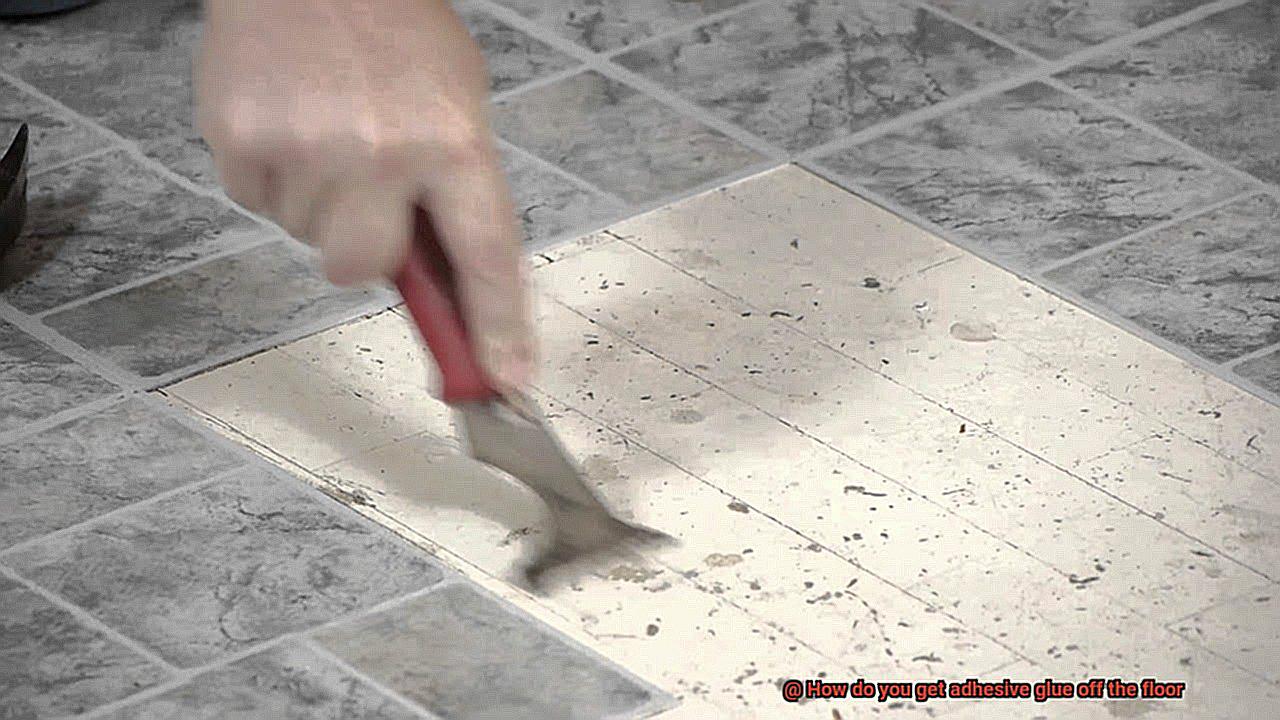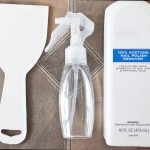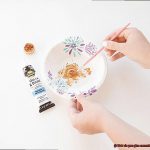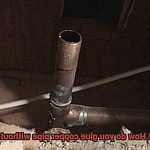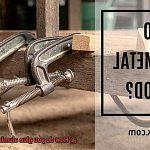Picture this: you walk into a room, ready to be wowed by your beautiful hardwood or sleek tiled floor, only to be greeted by the unsightly remnants of sticky adhesive glue. It’s enough to make your heart sink. But fear not. In this article, we’re going to unravel the mystery of removing adhesive glue from your precious floors once and for all.
We’ve all been there – desperately scrubbing and scraping, hoping for a miracle solution to rid our floors of that stubborn residue. Well, here’s the truth: getting rid of adhesive glue doesn’t have to be a frustrating and exhausting ordeal. Armed with the right knowledge and tools, you can restore your floor’s natural beauty without breaking a sweat.
In this handy guide, we’ll uncover a whole arsenal of effective techniques and home remedies to tackle different types of adhesives. From those pesky gummy leftovers from stickers to mighty epoxy glues, we’ve got you covered. And don’t worry – we won’t leave any flooring type behind. Whether you have hardwood, laminate, vinyl, or tile floors, we’ll show you how to confidently bring them back to life.
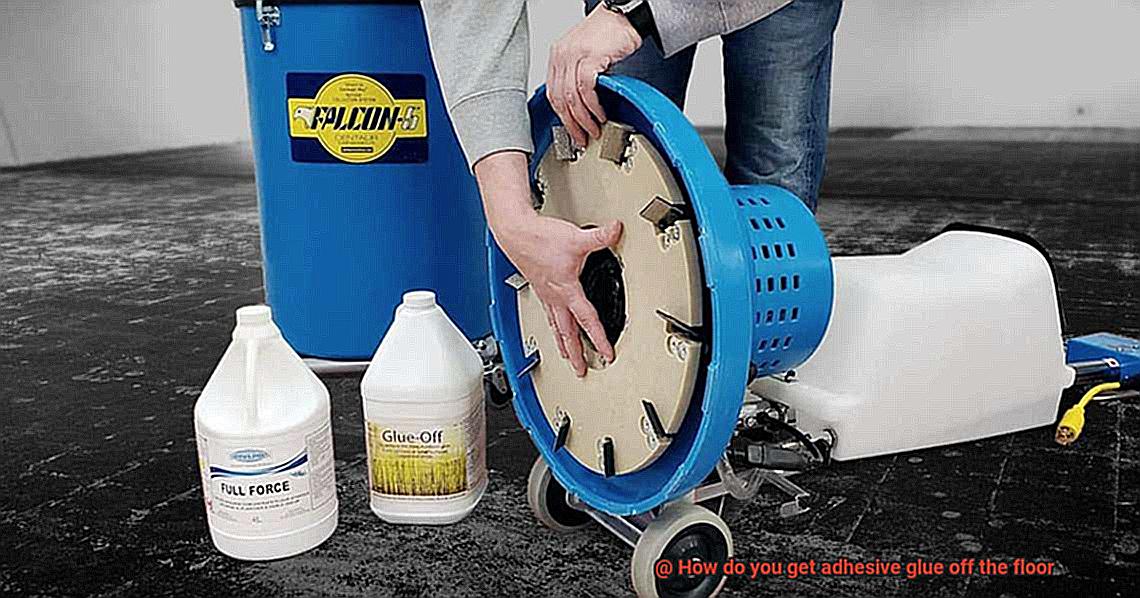
But wait, there’s more. We’ll also dive into the importance of choosing the right tools and products so that you don’t accidentally cause more harm than good during the removal process. We’ll spill the beans on what works and what doesn’t work – saving you from headaches and expensive repairs down the line.
So if you’re ready to bid farewell to those annoying glue remnants and resurrect the flawless look of your beloved floors, let’s jump headfirst into the captivating world of adhesive glue removal methods together. Stick around for expert tips and tricks that will leave your floors looking as good as new.
What is Adhesive Glue?
Contents
- 1 What is Adhesive Glue?
- 2 Why is Adhesive Glue Hard to Remove from Floors?
- 3 Quick Tips for Removing Adhesive Glue from Floors
- 4 Using Solvents or Adhesive Removers to Remove Glue from Floors
- 5 Using Heat to Soften the Adhesive Glue on Floors
- 6 Natural Methods for Removing Glue from Floors
- 7 Mechanical Methods for Removing Glue from Floors
- 8 Safety Precautions When Removing Glue from Floors
- 9 Conclusion
Adhesive glue, a true marvel of connectivity, weaves its magic by securely joining materials together. From the humble crafts to the complex industrial realm, glue’s versatility knows no bounds. This article delves into the captivating world of adhesive glue, exploring its myriad types and guiding you towards selecting the perfect adhesive for your precise requirements.
Decoding the Essence of Adhesive Glue:
- Adhesive glue, a versatile substance, creates a robust and enduring bond through the captivating process of adhesion.
- Derived from natural sources like animal bones or plant extracts, or crafted from synthetic compounds such as polymers, glue adapts to diverse applications.
- Its captivating property of adhering to various surfaces, including wood, metal, plastic, fabric, glass, and ceramics, makes it an invaluable tool.
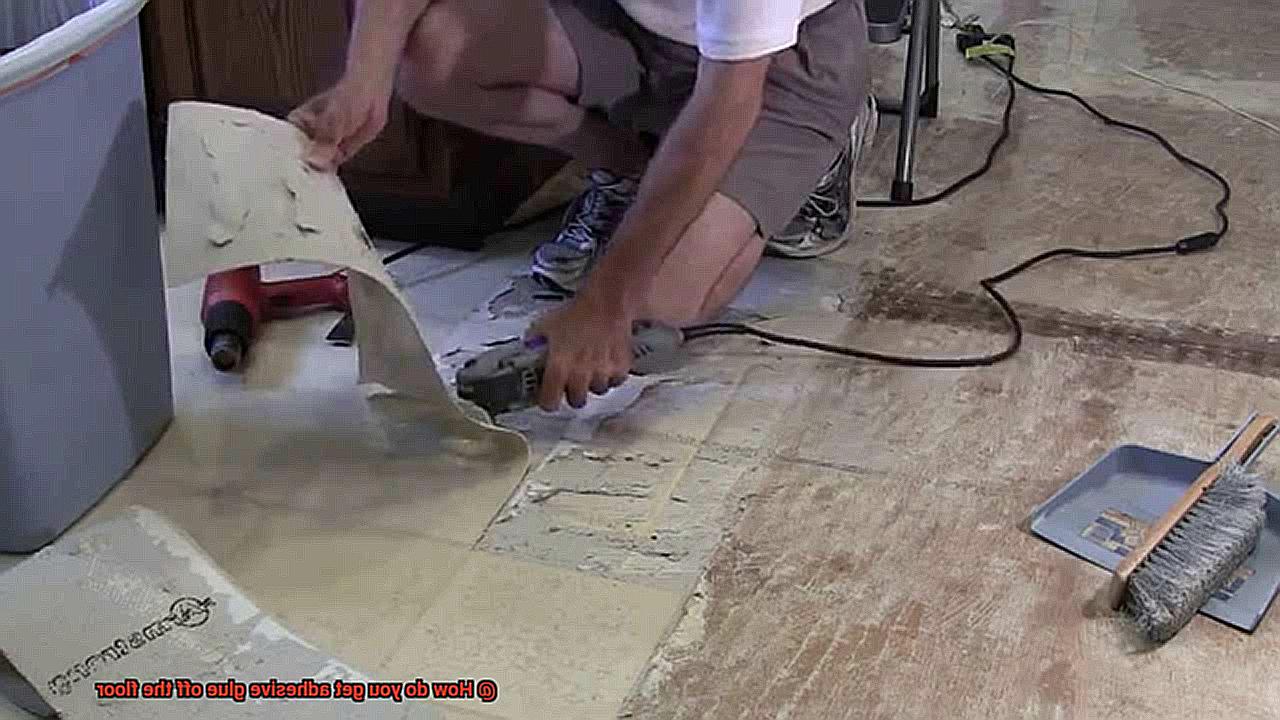
Unveiling the Array of Adhesive Glues:
Liquid Glues:
- White glue or craft glue exemplify this category.
- Effortlessly utilized and ideal for porous materials like paper or fabric, they offer exceptional bonding strength.
Hot Glue Sticks:
- Embraced by craft enthusiasts, these glues swiftly melt under the spell of a hot glue gun.
- Perfect for projects demanding immediate adhesion and formidable strength.
Epoxy Resins:
- These glues demand meticulous mixing before use and confer unparalleled bonding strength.
- Embrace them when durability and resistance to moisture or temperature changes are paramount.
Adhesive Tapes:
- With their sticky backing and simplicity in application, these tapes offer a practical alternative to traditional liquid glues.
- Well-suited for temporary fixes or situations that require convenience.
Essential Factors in Choosing Adhesive Glue:
Materials Being Bonded:
- Optimal compatibility between adhesive glue and the surfaces to be joined is crucial.
- Each glue type exhibits varying effectiveness on different materials.
Strength Requirements:
- Determine the level of bonding strength your project demands.
- Certain glues boast superior bonding capabilities compared to others.
Environmental Conditions:
- Contemplate the conditions your bond will endure, such as moisture, temperature fluctuations, or exposure to chemicals.
- Ensure your adhesive glue can withstand these challenges.
Why is Adhesive Glue Hard to Remove from Floors?
Prepare to embark on a captivating journey deep into the enigmatic realm of adhesive glue. Today, we unravel the mystery behind why this sticky adversary proves so challenging to remove from floors. Join me as we unlock the secrets and uncover the hidden forces at play.
Unyielding Bonds:
Our adventure begins with a revelation about the very essence of adhesive glue. Crafted to endure, this magical substance forges unbreakable bonds that withstand the test of time. Its secret lies within its chemical composition, where polymers create mighty connections with surfaces. These bonds are formidable and resistant, turning the removal of adhesive glue into an arduous undertaking.
Strength in Additives:
But wait, there’s more to this tale. Adhesive glues often harbor additional reinforcements, like fillers or additives, which amplify their power and adhesion properties. These extra ingredients fortify the glue’s grip, making it an even more formidable opponent on your beloved floors. It’s akin to donning a magical suit of armor that protects its bond from all attempts at separation.
The Art of Penetration:
Prepare yourself for another twist in our narrative. Adhesive glue possesses an uncanny ability to infiltrate porous surfaces such as concrete or wood. Once it permeates these materials, it becomes deeply embedded, securing its hold on your floors with unwavering determination. This infiltration adds yet another layer of complexity to the already challenging removal process.
The Curing Conundrum:
Ah, here comes another puzzling piece of our story. Adhesive glues require time to cure and reach their peak strength. During this curing process, they forge unbreakable chemical bonds with the floor surface, intensifying their resistance to removal. These bonds tighten like a lock, leaving you perplexed and frustrated as you attempt to break free from their clutches.
Temperature Tango:
Let us not overlook the influence of temperature and humidity on our sticky conundrum. High temperatures transform the glue, making it softer and stickier, further compounding the difficulty of removal. Conversely, low temperatures render the glue more brittle, causing it to fracture into smaller pieces that prolong the extraction process. The dance between temperature and adhesive glue adds an intriguing layer of complexity to your task.
Quick Tips for Removing Adhesive Glue from Floors

Removing adhesive glue from floors can be a challenging task, but fear not. With the right techniques and precautions, you can effectively conquer this sticky situation. In this article, we will explore five quick tips for removing adhesive glue from floors and ensure your safety while doing so.
Identify the Type of Adhesive Glue:
Before diving into the removal process, it’s crucial to identify the type of adhesive glue on your floor. Different adhesives require different removal techniques, so knowing what you’re dealing with is key. If you’re facing water-based glue, a simple solution is at hand. Soak a cloth in warm soapy water and gently rub the affected area until the glue loosens and comes off. Remember to use a mild detergent to avoid causing any harm to your precious flooring.
Harness the Power of Heat:
Heat can be your ally in the battle against adhesive glue. Grab a hairdryer or heat gun, set it on a low heat setting, and let the magic begin. Direct the gentle warmth towards the glue, moving back and forth to evenly distribute the heat. As the glue softens, take your trusty plastic scraper or putty knife and delicately scrape it away. Be mindful not to overheat the floor or cause any unwanted damage.
Unleash Solvents for Success:
When traditional methods fall short, solvents come to the rescue. Acetone, isopropyl alcohol, and citrus-based cleaners are potent allies in breaking down and loosening adhesive glue. To use them safely, start by testing the solvent on a small, inconspicuous area of the floor to ensure it won’t cause any discoloration or damage. Once confirmed, apply a small amount of solvent onto a clean cloth or sponge and gently rub the affected area. Let it sit for a few minutes to penetrate the adhesive, then carefully scrape away the softened glue with a scraper or plastic putty knife.
Prioritize Safety:
Safety is paramount when dealing with adhesives and solvents. Ensure proper ventilation by working in a well-ventilated area or opening windows and doors to allow fresh air in. Don’t forget to protect your hands by wearing gloves to avoid any potential irritation or chemical exposure. Follow the manufacturer’s instructions when using commercial adhesive removers and exercise restraint when applying solvents, avoiding excessive amounts.
Seek Professional Assistance:
Sometimes, even with your best efforts, stubborn adhesive glue may refuse to budge. In such cases, it’s wise to seek the expertise of a professional flooring specialist. These professionals have the know-how and specialized techniques or equipment to safely remove adhesive glue without causing any harm to your beloved floors.
Using Solvents or Adhesive Removers to Remove Glue from Floors
Sticky situations can be a real pain, especially when it comes to removing adhesive glue from your beloved floors. But fear not. With the right knowledge and a touch of expertise, you can banish that stubborn glue and restore your floors to their former glory. In this guide, we’ll delve into the world of solvents and adhesive removers, unlocking their potential as your secret weapons for conquering even the toughest glue challenges.
Testing the Waters: Ensuring Floor-Safe Solutions
Before immersing yourself in the realm of solvents or adhesive removers, it’s crucial to perform a small patch test on an inconspicuous area of your floor. This simple step ensures that you won’t inadvertently damage or discolor your beautiful flooring, providing peace of mind for your glue removal venture.
Acetone – The Heavyweight Champion: Ridding Glue with Vigor
When it comes to combating various types of glue, including super glue and epoxy adhesive, acetone stands tall as the heavyweight champion. However, its mighty power demands caution, as certain floor types may suffer under its influence. To harness the power of acetone effectively:
- Apply a small amount of acetone to a clean cloth or sponge.
- Gently rub the affected area until the glue begins to dissolve.
- Work in a well-ventilated space and avoid prolonged contact with your skin.
Citrus-Based Adhesive Removers – The Gentle Giants: A Safer Approach
Delicate flooring requires a gentler touch, and that’s where citrus-based adhesive removers come in as the gentle giants of glue removal. Ideal for hardwood or laminate floors, these milder alternatives ensure a safe yet effective solution. Follow these steps for successful glue removal:
- Apply the citrus-based remover directly to the glue.
- Allow it to sit for a few minutes, giving the adhesive time to soften.
- Use a clean cloth or sponge to wipe away the softened glue.
The Art of Scrapping: Tackling Stubborn Patches
For those pesky, stubborn patches of glue that refuse to budge, employing a scraper or putty knife can be your best strategy. However, extra care must be taken to prevent any floor surface damage. Here’s how to master the art of scrapping without leaving behind unsightly scratches:
Using Heat to Soften the Adhesive Glue on Floors
Peeling back a carpet or removing a tile should be a triumphant moment, not one filled with frustration due to stubborn adhesive glue. But fear not. The solution lies in the power of heat. By applying heat to the adhesive, you can soften it and bid farewell to sticky floors. In this captivating guide, we will explore the various methods of harnessing heat to tackle this adhesive challenge. So, grab your hairdryer or steam cleaner, and let’s embark on this adventure together.
Method 1: The Hairdryer or Heat Gun – A Sizzling Solution
First up is the trusty hairdryer or heat gun. Crank it up to its highest setting and hold it about six inches away from the glue. With a sweeping motion, evenly distribute the scorching heat onto the adhesive. As the glue warms up, it undergoes a magical transformation, becoming pliable and easy to remove. Equip yourself with a putty knife or plastic scraper, and gently scrape away the softened glue, unveiling the beauty beneath.
Method 2: The Mighty Steam Cleaner – A Burst of Steamy Brilliance
If you’re fortunate enough to possess a steam cleaner, prepare to witness its awe-inspiring powers. Follow the manufacturer’s instructions and direct the scorching steam directly onto the glue. Exercise patience as you allow the steam to work its enchantment for a few minutes. Suddenly, like a magician’s trick, the adhesive glue succumbs to its softened state, making scraping a breeze. Behold as your floor emerges from its sticky confinement.
Method 3: Hot Water to the Rescue – A Simple Solution
No heat gun or steam cleaner at your disposal? Fear not. A humble pot of boiling water will come to your rescue. Carefully pour the hot water over the adhesive glue, ensuring each droplet finds its mark. Grant the water a few minutes to penetrate and soften the adhesive’s grip. Then, armed with your loyal putty knife or trusty plastic scraper, prepare to witness the effortless removal of the softened glue. Little did you know, a mere pot of hot water could save the day.
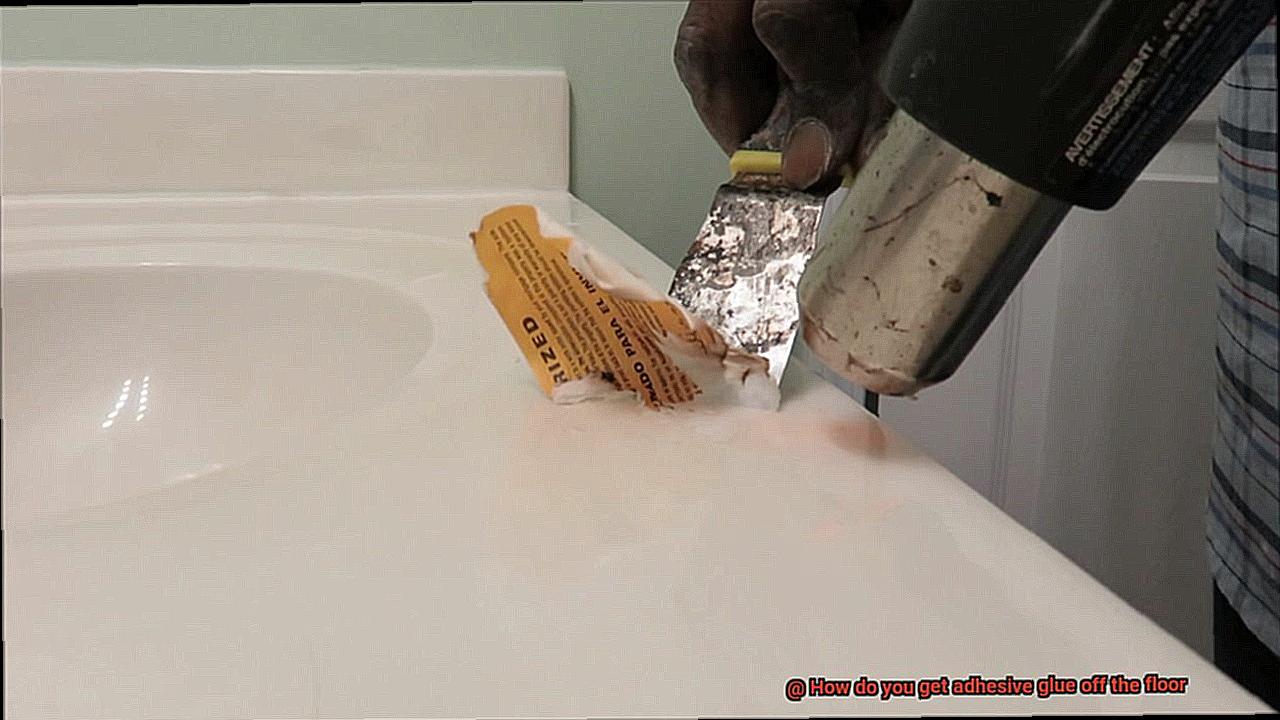
Natural Methods for Removing Glue from Floors
Fear not. In this captivating journey, we will explore enchanting natural methods that will transform your sticky floors into pristine beauty. Not only are these techniques safer for the environment and your health, but they promise to bring an end to your adhesive woes. So, grab your tools and let’s embark on this exciting adventure to discover the secrets of removing glue from floors naturally.
Method 1: Harnessing the Power of Heat
Prepare to be amazed by the magical abilities of heat. Using a hairdryer or heat gun, soften the adhesive glue by applying heat for a few minutes. Watch as it becomes soft and pliable, ready for removal. With a gentle touch, use a plastic scraper or putty knife to scrape off the softened glue, taking care not to damage your precious flooring. Say goodbye to stubborn glue with the power of heat.
Method 2: Unleashing the Versatile Vinegar Solution
Enter vinegar, the superhero of household products. Create a fantastic mixture by combining equal parts of white vinegar and warm water in a spray bottle. Spritz this powerful solution onto the glue and allow it to work its magic for a few minutes. Witness the vinegar penetrate the adhesive, making it surrender effortlessly. Armed with a cloth or sponge, wipe away the softened glue and reveal a gleaming floor. Repeat if necessary, as victory over adhesive glue is within reach.
Method 3: Unveiling the Citrusy Secret Weapon
Lemon juice takes center stage as our secret weapon against adhesive glue. The citric acid within lemon juice effortlessly breaks down stubborn glue. Squeeze fresh lemon juice onto the glue and let it sit for about 10 minutes. Armed with a cloth or sponge, scrub the area until the grip of the glue loosens. Rinse with warm water and repeat if needed, as the power of citrus will triumph over sticky situations.
Mechanical Methods for Removing Glue from Floors
Fear not, for we hold the key to unlocking the secrets of mechanical methods for liberating your space from sticky situations. Join us on this captivating journey as we delve into the realms of scraping, sanding, and buffing, where floors are transformed into pristine beauty. So gather your tools, summon your inner magician, and let us embark on a magical quest to remove glue from your floors.
Scraping – The Delicate Dance:
In the realm of mechanical methods, scraping reigns supreme. This exquisite technique demands precision and a gentle touch to ensure your floors remain unscathed. Begin by applying a solvent or adhesive remover to soften the glue’s grip. Once it yields to your will, wield a trusty putty knife or scraper at a low angle, delicately lifting and banishing the glue from its stronghold. Remember, patience is your guiding light. Work in small sections, repeating the enchanting process until every last trace of sticky residue is vanquished.
Sanding – Unleash the Power Within:
For those blessed with wooden floors, sanding becomes your mystical weapon of choice. It is akin to bestowing upon your floor a wondrous spa treatment. Commence by employing coarse sandpaper to roughen the adhesive’s surface, preparing it for its ultimate demise. Then, with finesse and grace, transition to finer sandpaper, continuing the enchantment until not even a whisper of glue remains. Do not forget to sweep away any remnants left behind, revealing a floor that gleams like a polished gem.
Buffing – A Dance of Elegance:
In the kingdom of vinyl or linoleum floors, buffing emerges as the dance of elegance. Picture a grand ballroom performance between a rotary floor buffer and an abrasive pad or brush. The buffer spins with nimble agility, empowering the abrasive pad or brush to gracefully eradicate any lingering adhesive residue. It is a spectacle akin to witnessing a prima ballerina pirouette across the stage. However, be aware that buffing may not conquer stubborn or thick layers of glue, yet it effortlessly triumphs over lighter residue, leaving your floor spellbound.
Safety Precautions When Removing Glue from Floors
As we venture further into this realm, it’s vital to prioritize safety. Removing adhesive glue can be a challenging task, but with the right precautions, we can conquer any sticky situation. Let’s explore the safety measures you need to consider before embarking on this adventure.
Embrace the Breeze:
Before diving into your glue removal quest, ensure proper ventilation in the area. Open windows and doors to invite in a refreshing breeze or employ fans to create a whirlwind of air circulation. By doing so, you’ll reduce the concentration of fumes and odors that may arise during the process.
Gear Up for Success:
Equip yourself like a warrior preparing for battle. Don long sleeves, chemical-resistant gloves, safety goggles, and a face mask to shield yourself from potential irritation or burns caused by glue removers. Prioritize your safety above all else.
Master the Instructions:
Just as a mage follows an ancient scroll, carefully read and adhere to the instructions provided by the glue remover manufacturer. Each product has its unique application methods and safety precautions. Follow these guidelines diligently for a triumphant outcome.
Fend off Fumes:
Chemical-based glue removers can release noxious fumes that assault your senses. Ensure your workspace is well-ventilated, and if possible, don a specialized respirator mask designed to tackle chemical fumes. Let your lungs breathe freely.
Handle with Tender Care:
Beware of the potent elixirs within some glue removers that can irritate your skin or eyes. Should accidental contact occur, immediately rinse the affected area with copious amounts of water. If irritation persists, seek medical attention promptly. It’s better to err on the side of caution.
Shield Innocence:
During your glue removal escapades, create a fortress where children and pets are kept at a safe distance. The chemicals in glue removers can be toxic if ingested or come into contact with their delicate skin or eyes. Raise safety gates and keep tiny hands and curious paws away.
5QhQ_CA8diU” >
Conclusion
Removing adhesive glue from the floor can be a real challenge. But fear not, for I am here to guide you through this sticky situation. With a few simple steps and some handy tools, you’ll have that stubborn glue gone in no time.
First things first, gather your arsenal of supplies. You’ll need a plastic scraper or putty knife, some rubbing alcohol or acetone, a clean cloth or sponge, and some warm soapy water. Now let’s get down to business.
Start by gently scraping off as much of the glue as possible with the plastic scraper or putty knife. Be careful not to scratch or damage the floor surface. Take your time and work slowly, applying just enough pressure to lift the glue without causing any harm.
Once you’ve removed the bulk of the glue, it’s time to tackle the residue that remains. Dampen your cloth or sponge with rubbing alcohol or acetone (make sure to test it on a small inconspicuous area first) and gently dab at the remaining adhesive. The alcohol will help break down the glue and make it easier to remove.
Continue dabbing and wiping until all traces of adhesive are gone. If needed, you can also use warm soapy water to further clean the area and remove any leftover residue. Rinse thoroughly and allow the floor to dry completely before walking on it again.
Remember, patience is key when dealing with adhesive glue on floors. Rushing may cause more harm than good. So take your time, follow these steps diligently, and soon enough your floor will be free from that sticky mess.
In conclusion, removing adhesive glue from the floor requires a combination of gentle scraping, using solvents like rubbing alcohol or acetone, and thorough cleaning with warm soapy water.

